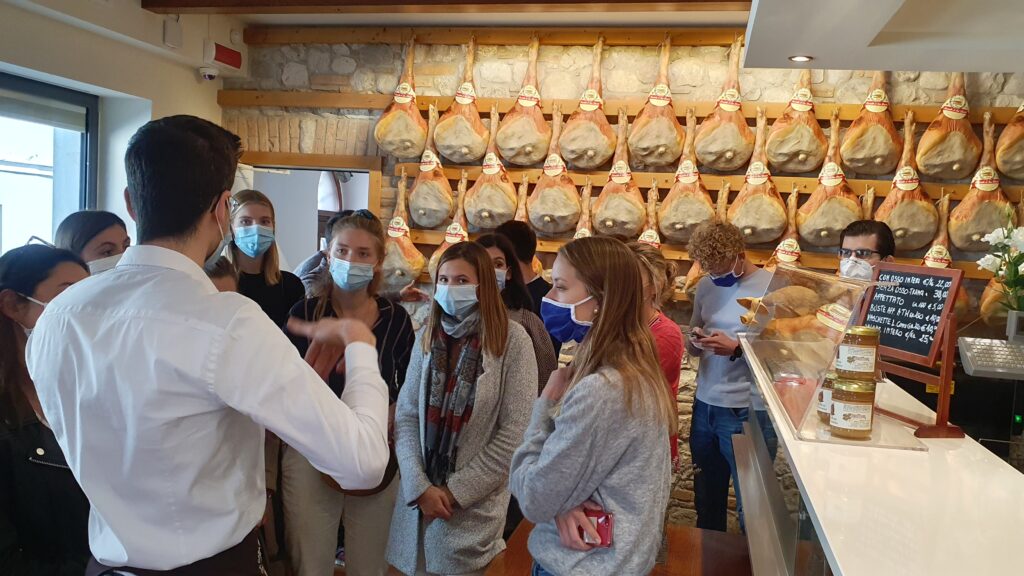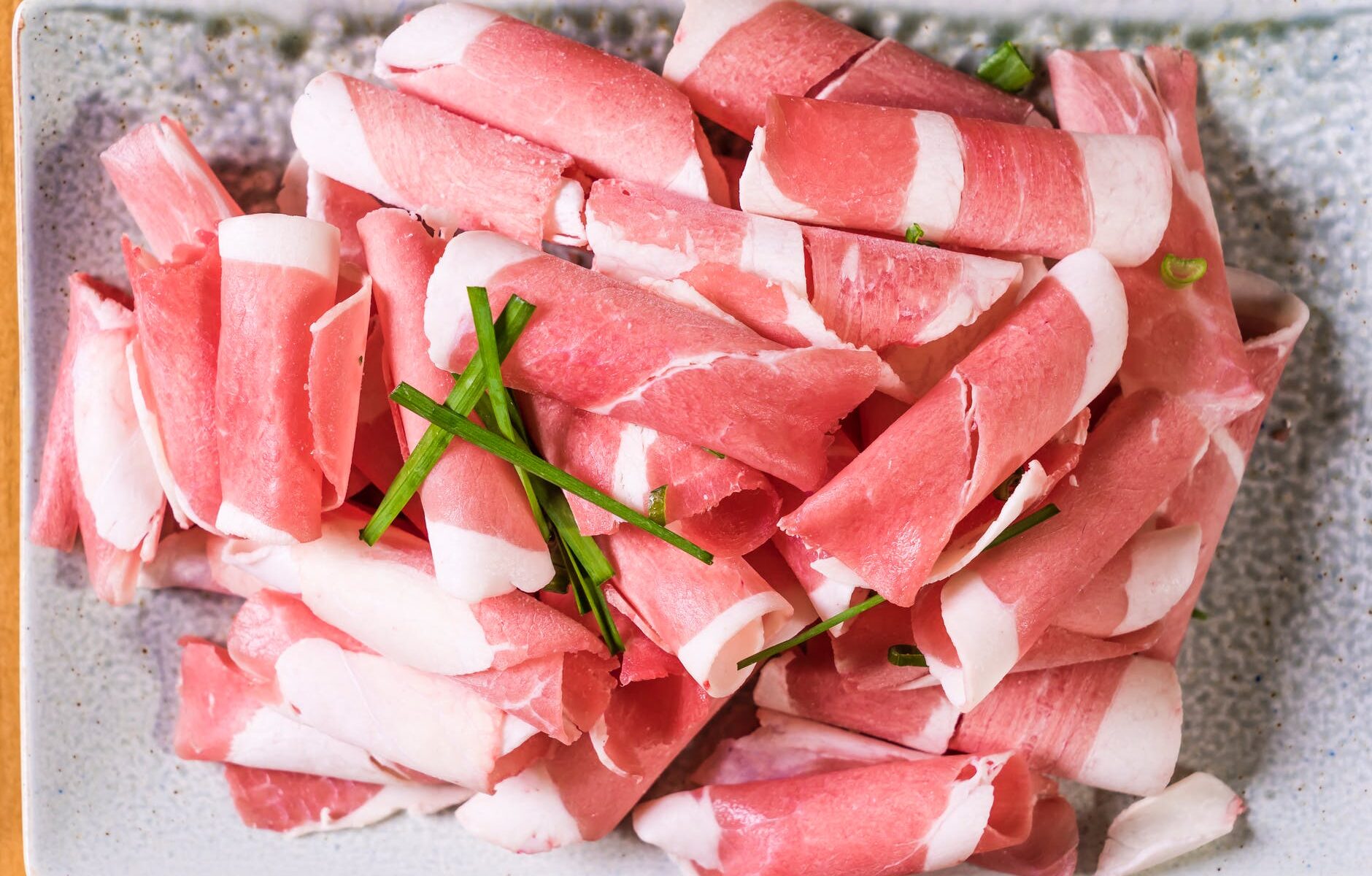Author: Audrène Dubiez & Julie Dorbes – IFBM students intake 2020
The company: a family history
The heart of the small old village of San Daniele del Friuli hides the story of San Daniele prosciutto. Behind the unique know-how in the making of prosciutto is a deep-rooted entrepreneurial family history.
Before achieving their amazing prosciutto, in 1875 the family began the “commerce of colonial imports, cereals, spices, cured meats and wines”. In 1906, Alberto Osvaldo moved the company to San Daniele del Friuli because the commercial exchanges in this City were easier. The company’s added value is that they have only collaborated with Social Cooperative producers and butchers who are all based in the city, for a very long time. In fact, having all their suppliers and partners in the same place allows them to have all the raw materials they need as close to production as possible. The “La Casa del Prosciutto” Brand was born in 1963 and it represents a production of about 12.000 pieces per year with an expansion strategy.
As part of our Master in International Food and Beverage Management programme at ESCP Business School, we had the opportunity, while visiting the factory, to meet the new generation of La Casa del Prosciutto. The family all works together, the father and mother with their two sons are in charge of both the production and the restaurant, all under the same roof. Meeting this family and sharing their passion with them for a day was a real pleasure for all of us studying the Food & Beverage industry. We felt very welcome since we not only learned more about the production and business parts aspects but we also had the great privilege to taste the final product in the place where everything started. Let’s see how this family knowledge is turned into a product of excellence.
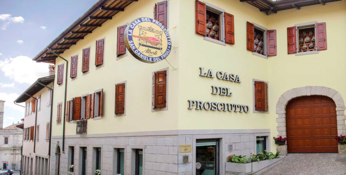
The prosciutto production process:
The production of the San Daniele prosciutto is very unique and follows a very traditional process which is passed on from generation to generation. This peculiar process is composed of various phases, each having an important impact on the final result of the product, and its amazing taste.
After receiving the fresh pork thighs, only the ones that respect the compliance criteria are kept. Then, before starting the whole process and in order to tone the meat, they are stored at a temperature of 0°C/3°C degrees. In order to obtain the typical shape of the San Daniele, the thighs are cut in the traditional way and then hung up according to their weight.
Salting the meat is the second step of this process. The selected thighs are salted by hand with sea salt and they will stay in the salt as many days as their weight in kg. In the middle of the salting period, the thighs are massaged in order to make the salt penetrate the meat and the muscle fibers, and then some more salt is added. After the salting is over, the thighs are desalted and stored in horizontal shelves which puts pressure on the muscle tissue and creates the perfect consistency for the following curing phase.
This next step is what we call “Grooming” and it consists of drying the ham. The thighs stay in “resting” cells” between 90 and 150 days in order to avoid having an excessively dehydrated surface. A better shape is also given to the meat during this phase of the process, by cutting off the excess. 4 months after the beginning of the process, the hams are rinsed at a low pressure in order to get rid of potential impurities and eliminate the salt excess. The thighs can then dry upside down, for approximately 2 weeks in a drying room.
The next step, that occurs 7 months after the beginning of production, is called the “Larding”. It consists in covering the meat with a mixture of pork fat and salt. This allows the superficial layers of muscle to soften and indeed avoid drying more quickly than the internal layers. Also, the “larding” allows for a gradual loss of moisture in the meat. Once covered, the meat can be stored in the temperature-controlled “pre-aging” room.
Then comes the “plastering” phase. 10 months after the beginning of the process, the meat is manually recovered with a pork fat, salt, pepper and rice flour mixture. Once covered, the thighs are put in the aging rooms and are exposed to the natural wind of the San Daniele region to finish maturing before the final product is ready.
Last but not least, Quality Control marks the end of production. It is carried out with the authentic method of “planting” which consists of an olfactory evaluation. Only the hams that respect all the criteria and have the right scent will be able to continue on towards the following phase: branding. The certification institute INEQ makes the final verifications and checks if everything is in order before authorising the sale. The final products can finally be stored in the historical rooms of the company, waiting to be eaten by foodies such as the ESCP IFBM programme students.
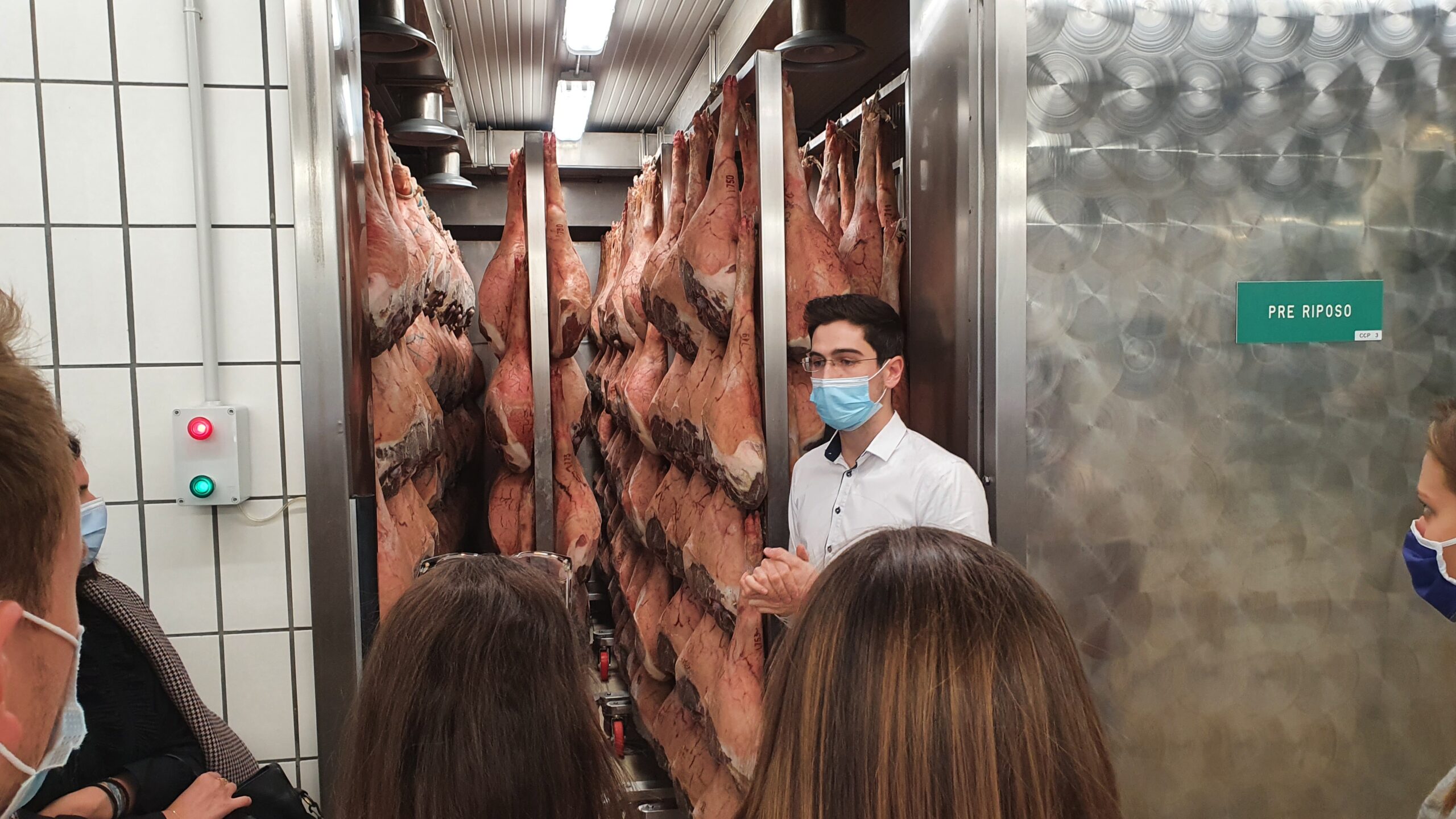
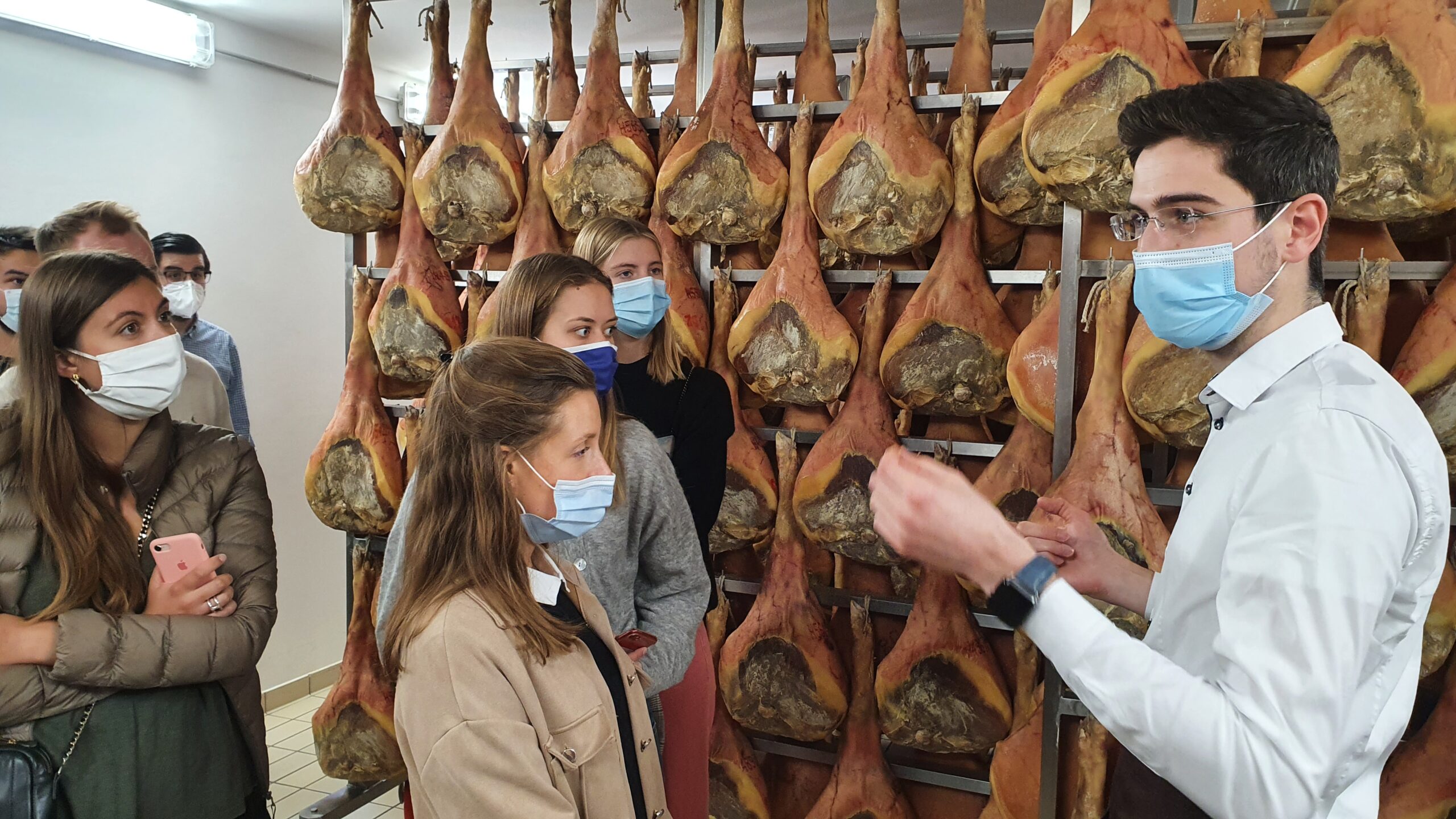
The tasting experience:
After our visit to discover and understand the production process, we had the opportunity to have lunch together in the restaurant and taste the ham. The convivial family spirit could be felt in the food too as we were all served a full plate of ham, cheeses and vegetables.
Each plate included three types of ham, with different flavours according to their time of aging. The eating experience really made us realise how the aging of the prosciutto played an important role in the taste and degree of intensity of each piece of meat.
Tasting the products after the explanation of the different stages of production was extremely interesting as we could really understand what was on our plates and the reasons for the variations in taste of the different hams.
Again, the family atmosphere and the extremely warm welcome we received made all of us enjoy a very powerful experience that will probably stay with all ESCP Master in Food & Beverage students for a long time.
